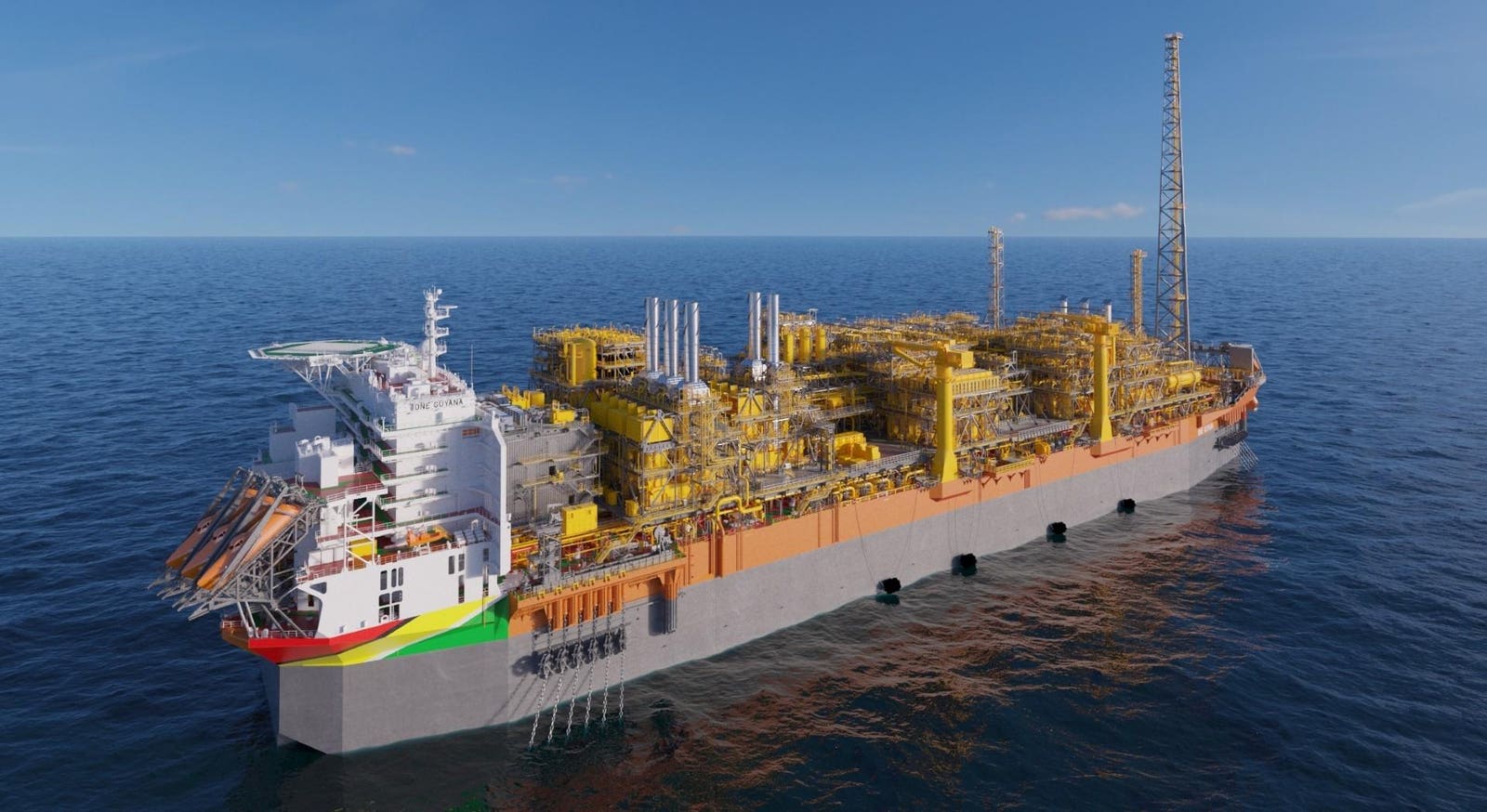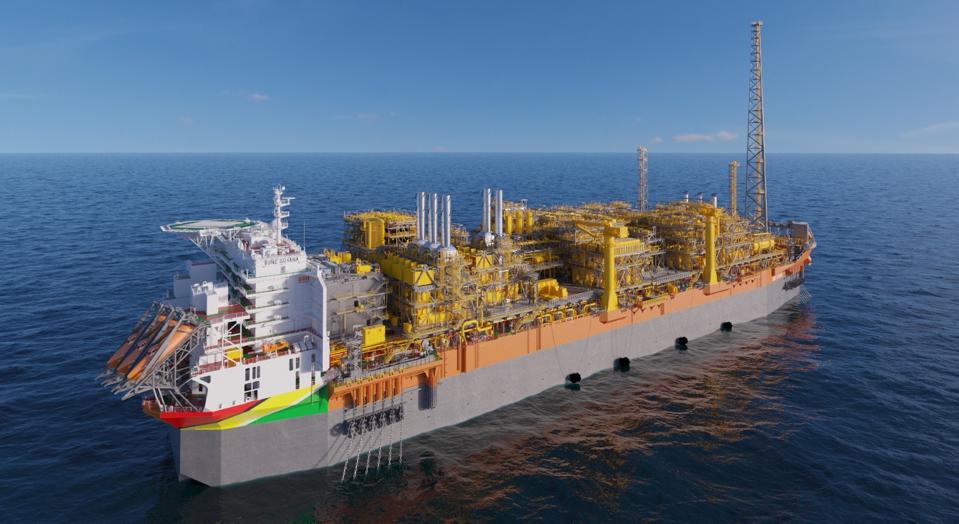Photo of the ONE GUYANA FPSO in use at the Yellowtail deepwater field by ExxonMobil and its Consortium partners, Chevron and CNOOC, offshore Guyana.
ExxonMobil
ExxonMobil, operator of the offshore Guyana Stabroek consortium with partners Chevron and CNOOC, announced the startup of its fourth deepwater project, Yellowtail on Friday. With production capacity of 250,000 barrels of oil per day (bpd), Yellowtail raises total Stabroek capacity to 900,000 bpd faster than anyone had expected just a year ago.
“Yellowtail’s ahead-of-schedule startup is a significant milestone for ExxonMobil and the people of Guyana,” said Dan Ammann, president of ExxonMobil Upstream Company, said in a release. “With Guyanese making up more than 67% of the country’s oil-and-gas workforce and over 2,000 local businesses engaged, this project reflects our deepening roots in the country and our shared commitment to long-term, inclusive growth.”
Turning Guyana Into A Major Oil Powerhouse
Yellowtail represents the fourth offshore mega-project the consortium has successfully taken to production in just the last five years under budget and ahead of schedule, a record the company says ranks its Guayana deepwater operations as “the most successful in the world.” The additional 250,000 bpd capacity from Yellowtail sets the overall Stabroek operation on pace to reach capacity of 1.7 million bpd by 2030. Achieving that level of production would rank Guyana, a tiny nation of approximately 800,000 citizens, among the 15 largest oil producing nations in the world.
Irfaan Ali the president of Guyana as seen walking and posing at the official Welcome Ceremony of the CELAC delegation welcomed by the Spanish Prime Minister Pedro Sanchez, the President of the European Council Charles Michel and the Head of the European Commission Ursula Von Der Leyen. The European Union, Community of Latin American and Caribbean States Summit took place in Brussels, Belgium on 17-18 July 2023. The 3rd EU-CELAC Summit in Brussels, Belgium on 17 July 2023. (Photo by Nicolas Economou/NurPhoto via Getty Images)
NurPhoto via Getty Images
ExxonMobil, as the project operator under the consortium’s joint operating agreement, owns a 45% working interest in the Stabroek operations. CNOOC – the Chinese National Offshore Oil Corporation – owns a 25% share, with Chevron owning the remaining 30%. Chevron holds that share now thanks to its having prevailed in a long-running arbitration case involving an ExxonMobil challenge to its takeover of a stake previously owned by Houston-based independent Hess Corp. Following that decision, Chevron was able to close its deal with Hess on July 21.
Yellowtail’s operations are facilitated by the ONE GUYANA floating production, storage, and offloading (FPSO) vessel built and operated by Netherlands-based SBM Offshore. The vessel is currently under a lease agreement, but ExxonMobil will ultimately acquire ownership of it when the lease period expires. The ONE GUYANA is the largest FPSO in operation offshore Guyana to date, and sports storage capacity of 2 million barrels in addition to its initial 250,000 bpd production capacity.
The world-class development at Stabroek has made Guyana the fastest-growing economy on earth since 2020 as the Guyanese government has taken in $6.2 billion in revenues as of the end of 2024. Exxon’s Guyana Annual Report for 2024 notes that the three consortium partners have made cumulative investments in Guyana totaling $55 billion. Obviously, both numbers will continue to rise as the project grows, with Guyana’s revenues rising to an estimated $10 billion annually by 2030.
A Transformative Development For Guyana
In my first story about Stabroek in 2019, I wrote, “The 800,000 or so citizens of Guyana are about to experience a very significant change in their standard of living due to the ongoing development of their nation’s offshore mineral resources. The crucial challenge for the government there will come in properly managing the new wealth.”
It was obvious then that the consortium was on the precipice of a new oil development which would ultimately transform the Guyanese economy. That transformation is well underway now, with much, much more to come. In reality, it’s just getting started.

